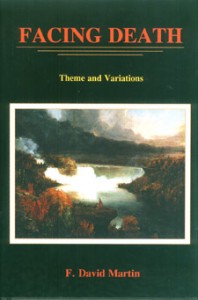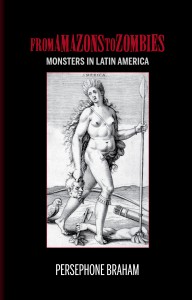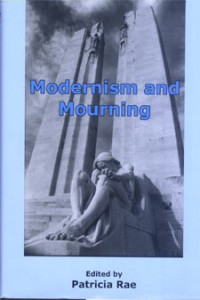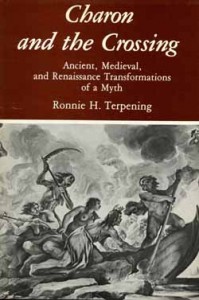As the harvest period comes to an end and nature fades out to make room for the cold, barren ground of winter, the dead are celebrated.
The Celtic festival of Samhain (SAH-in or SOW-in) occurs the night before November 1st, the Celtic New Year, when the divide between the dead and the living is at its thinnest. To ward off ghosts, bonfires were lit and costumes worn, beginning the tradition of make believe we see today and the fear behind nightly shadows.
A month of tradition and superstition, October and its deathly festivities have been through many variations as the celebrations have been twisted to fit within the controlling religious and political powers. In Ancient Rome, Samhain was combined with both Feralia, the Roman celebration of the dead, and Pomona, the Roman goddess of fruit and trees leading to the inclusion of apple bobbing in Halloween festivities today. Even as the Celtic celebration endured, it has gone through many transitions from the original Samhain to All Hallows Eve and eventually becoming the family-friendly Halloween we know today.
Looking through the Bucknell Press’s database, several books came to mind: Modernism and Mourning Edited by Patricia Rae dedicates itself to examining the resistance to mourning through modernist writings; Facing Death: Theme and Variations by F. David Martin argues the need to face death through memory; Charon and the Crossing by Ronnie H. Terpening studies Charon, the Ancient Greek ferryman of Hades, and the cultural need for this deathly symbol. Each continues the fascination of death and the dead, following a long history of traditions and writings.
Edited by Patricia Rae
The essays in Modernism and Mourning examine modernist literature’s propensity for resisting the “work of mourning.” Drawing from recent critical and theoretical work on mourning, they explore how much modernist writing repudiates Freud’s famous injunction to mourners to “work through” their grief, endorsing instead a “resistant mourning” related to, though not always identical with, Freudian “melancholia.”
Several of the essays argue that the messages of modernist literature on mourning, reinforced by its experimental forms, are politically progressive, instructing readers to reject restorative nostalgia and normative mourning rituals that aim to restore the social status quo. Others show how modernist depictions of unresolved mourning are implicitly conservative, suggesting that unresolved grief is a function of structural absence rather than of historical loss, or that confronting and coming to terms with loss would require an expressive masculinity unacceptable within the strictures of capitalist modernity.
Although their chief purpose is to contribute to modernist literary scholarship, the readings here also hint at the pertinence of modernist mourning to the present day, in which the catastrophic losses of 9/11, of retaliatory war, of racially motivated genocide, and of the AIDS epidemic have made the question of how to mourn responsibly a subject of widespread interest. In this vein, several contributors view modernist treatments of mourning as models for ethical mourning, in offering alternatives to the familiar tragic plot of loss and vengeance, or forms of commemoration that do not efface the dead. Others examine the intersection between the language of resistant mourning in poetry and fiction and the discourse on public policy between the two World Wars, demonstrating how the failure of consolation can sometimes provide an opportunity for social reform.
 Facing Death: Theme and Variations
Facing Death: Theme and Variations
By F. David Martin
If we do not, at some point in our life, face death–thinking hard and straight about it– we turn away from our authenticity. If that facing rejects irrational faith, dogmas, mystification, and personal immortality, is there yet a path free of despair? David Martin argues that participatory pantheism–the experience of the secular and the sacred both as a unity and as a mystery–provides such a path. As we age, the future shortens and the past lengthens. But if we face death, more and more memories–especially the involuntary–are stirred up and cohere into stronger, as well as new, unities.
What paradise there is for the elderly is not so much in what is happening but in remembering what happened in a meaningful way. For Dr. Martin, transformation of memory into the memorable is the transcendent meaning each of us can wrest from our coming to death.
Since nature is our home, Dr. Martin reasons, the more we think participatively (thinking from ) rather than only objectively (thinking at), the more we are aware of the mystery and the majesty of that home. The more we know about our world and ourselves, the more we can understand how much we don’t know. This kind of thinking is a thanking. It brings us within the sacred. We are anchored, and the churning of change no longer sweeps us away.
By Ronnie H. Terpening
Charon and the Crossing is the first comprehensive critical study of the figure of the underworld boatman Charon as it is found in the literary tradition from Classical Antiquity through the Italian renaissance and early Baroque period. The tradition of the underworld crossing embraces a variety of genres and writers both major and minor.
The world-wide cultural significance of the concept of an afterlife boatman, traced in the introduction, is noteworthy. In Greek literature alonge, the encounter with Charon is an aspect of many mythic descents, including those of Theseus, Herakles, Dionysos, Alcestis, Orpheus, Persephone, and Psyche. The limits and potentialities of humanity are perhaps nowhere more sharply defined than at the moment of crossing, a myth central to our poetic imagination. When poets throughout the centuries have dealt with fate, death, and an afterlife existence, they have availed themselves countless times of no less a figure than Charon, the ferryman of Hades.
And keep an eye out for an upcoming Bucknell University Press release:
 From Amazons to Zombies: Monsters in Latin America
From Amazons to Zombies: Monsters in Latin America
By Persephone Braham

